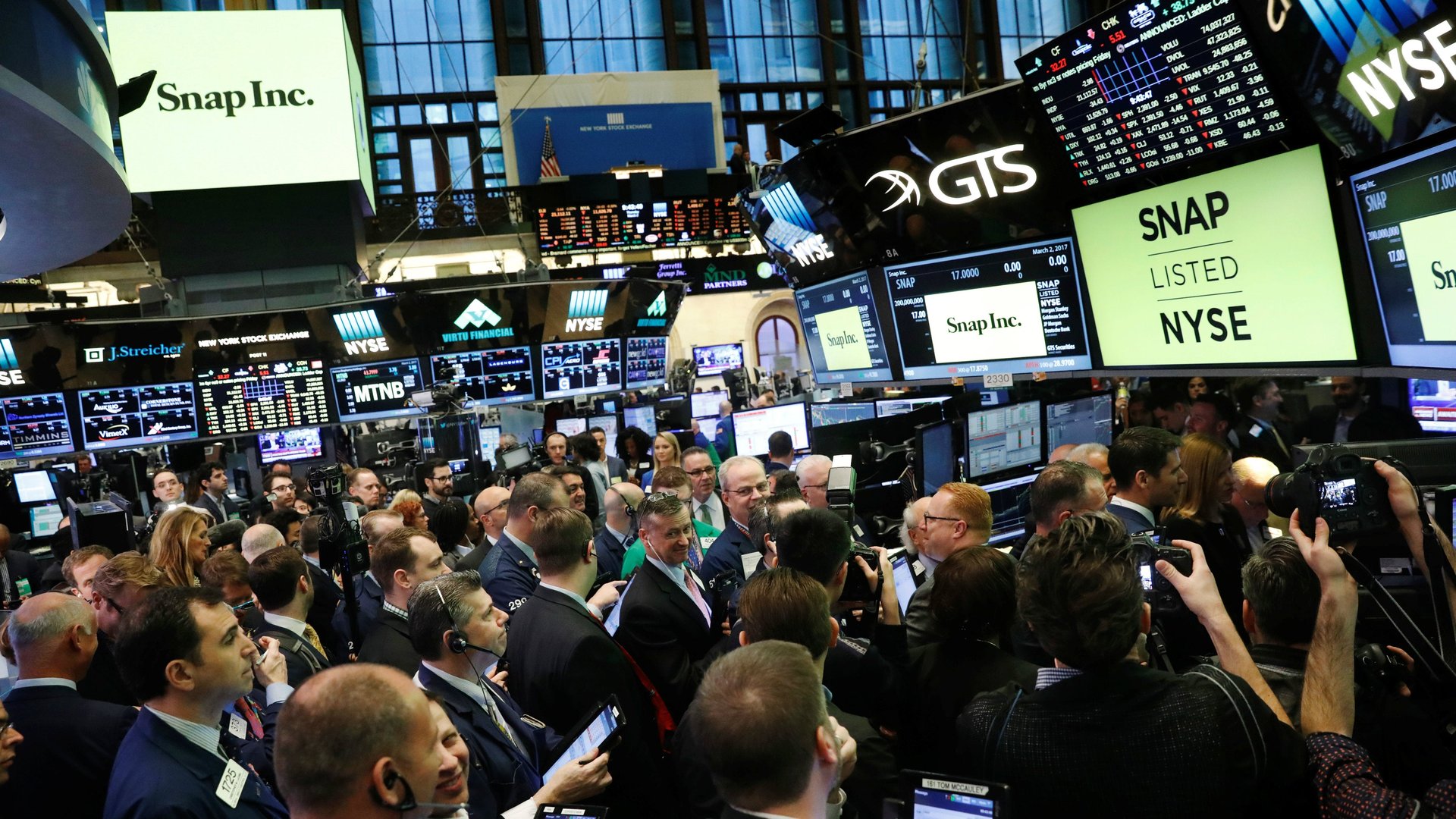Snap is proof that investors love to follow a herd
Just two months after going public with great fanfare, Snap reported a staggering quarterly loss of $2.2 billion in its first release as a listed company. The maker of Snapchat’s share price plummeted by more than 20%.


Just two months after going public with great fanfare, Snap reported a staggering quarterly loss of $2.2 billion in its first release as a listed company. The maker of Snapchat’s share price plummeted by more than 20%.
Two days later, Snap’s share price jumped by 8%. What made investors forget about that multibillion-dollar loss so quickly? This is what—a bunch of regulatory filings came out showing hedge funds and other asset managers had bought Snap shares in the first quarter. Tech hedge fund Coatue Management, Soros Fund Management, Goldman Sachs, activist hedge fund Jana Partners, Daniel Loeb’s Third Point hedge fund, and BlackRock, the largest asset manager in the world, are among the investors that reported buying Snap stock earlier this year, according to Reuters.
After seeing these disclosures, investors seemed to decide, if they’re doing it, why shouldn’t we?
Snap’s shares are currently trading about 20% above their IPO price of $17 per share, with much of that ground made up recently, after the post-earnings stumble. In its earliest days as a listed company, Snap’s shares traded much higher. The unprofitable camera company’s IPO was 12 times oversubscribed, according to CNBC. Everybody wanted a piece early on.
Amid the initial hype, Snap didn’t attract a single “buy” rating from Wall Street analysts’ first batch of research recommendations. Although more optimistic takes on the stock have been published since, analysts still aren’t that keen on Snap. Only Twitter is perceived as a worse stock to buy among Snap’s main tech rivals. Snap has just seven “buy” recommendations from brokers, 28% of all recommendations. More than 90% of analyst rate Facebook a “buy,” and the social network’s Instagram subsidiary recently released new features that Snapchat users might recognize.
Part of brokers’ wariness may be down to Snap’s bullish valuation—its market value is now more than $24 billion. Its market value relative to its revenue is far higher than its main competitors. A high price-to-sales ratio can be a positive signal; a sign that analysts think the company has strong growth prospects. But a heady valuation also sets the bar high for future financial results, risking a backlash from traders if its operations don’t deliver as expected.
But if big hedge funds have been buying Snap, then surely they must see something that average investors don’t appreciate. The thing is, hedge funds move in and out of stocks quickly, and the regulatory filings that sparked the recent rally (known as 13F filings) only give an outdated snapshot of how these investors positioned their portfolios months ago. Some might not own Snap stock anymore, and others may be among the growing number of traders selling Snap short—that is, betting that the price of the stock will fall.
Regardless, taking your investing cues from hedge funds, which have underperformed broad stock indexes of late, isn’t just following a herd, it’s potentially following a herd off the edge of a cliff.